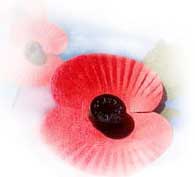

Rivers gained his MD in London in 1888 and was elected a Fellow of the Royal College of Psychiatrists the same year. In 1892, Rivers went to Jena, in Germany, to see how the practitioners of neurophysiology and psychology treated their patients. Rivers finally arrived at Cambridge in 1893 (he had wanted to gain his undergraduate degree there) to teach physiology of the sense organs at St John College, Cambridge.
From 1898 to 1922, Rivers went on many anthropological expeditions. He was particularly interested in the peoples of Melanesia - the Torres Straits islands, the Papuan coast, Fry River delta as well as the people who lived on Australia's Cape York Peninsula. Rivers also worked with the Labrador Eskimos, Egyptians, the Todas and groups from India and Ceylon (now known as Sri Lanka).
Rivers is also known for his work with Dr Henry Head. They began their collaboration on the peripheral sensory mechanism in 1903. A surgeon cut Head's radial and external cutaneous nerves in his forearm and bound the cut edges together with silk suture thread. Rivers then observed the extent of the healing and regenerative process for 167 days (until December 1907).